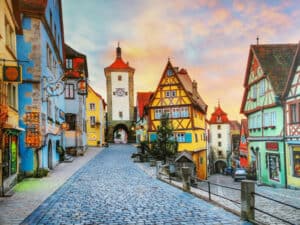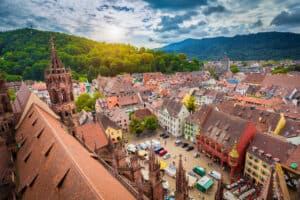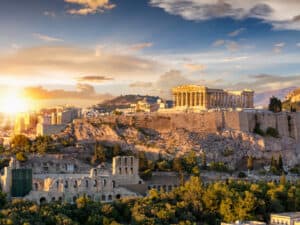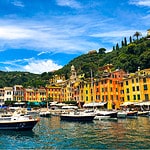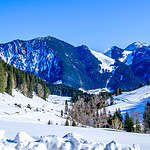Visit Munich, the capital of Bavaria and the third largest city in Germany, is a beautiful and fascinating destination for travelers. With its rich history, stunning architecture, vibrant culture, and world-class attractions, Munich is a must-visit for anyone traveling to Germany.
Contents
Must-See Sights when visit Munich
Marienplatz, also known as Mary’s Square, is the central square of Munich and one of the city’s most famous landmarks. Gothic buildings surround the church in the city’s Old Town. It’s a must-see for tourists because of its central location and beautiful architecture.
Marienplatz
Marienplatz, also known as Mary’s Square, is the central square of Munich and one of the city’s most famous landmarks. It is located in the heart of the city’s historic Old Town and is surrounded by beautiful Gothic architecture, making it a must-see for visitors.
In Marienplatz, there is a clock tower called the Glockenspiel. It has 43 bells and 32 figures that move twice a day to show a historical event. The Glockenspiel is a popular tourist attraction, and visitors gather in the square to watch the figures move and the bells ring.
In addition to the Glockenspiel, Marienplatz is also home to the New Town Hall, a beautiful Gothic building that is one of Munich’s most recognizable landmarks. The town hall is known for its impressive façade, which features intricate sculptures and carvings, as well as its impressive Gothic tower, which offers stunning views of the city.
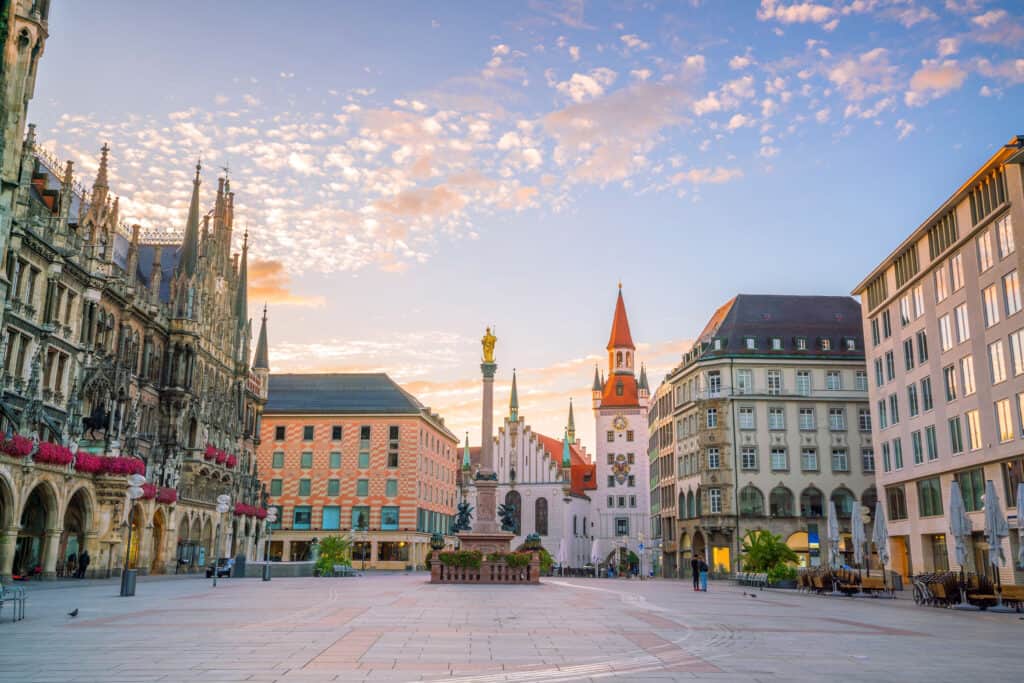
Another notable landmark in Marienplatz is St. Peter’s Church, a beautiful Gothic church that dates back to the 13th century. The church is known for its impressive stained-glass windows, its intricate frescoes, and its ornate altarpiece. Visitors can also climb the tower of St. Peter’s Church for panoramic views of the city.
In addition to its historical and architectural attractions, Marienplatz is also a vibrant and bustling center of modern life in Munich. The square is surrounded by cafes, restaurants, and shops, and is a popular spot for people-watching, shopping, and dining.
Englischer Garten
The Englischer Garten, also known as the English Garden, is a large park located in the heart of Munich. It covers an area of over 900 acres and is one of the largest city parks in the world. The park is known for its rolling hills, meadows, streams, and lakes, making it a peaceful oasis in the midst of the bustling city.
One of the most famous attractions in the Englischer Garten is the Chinese Tower, a 33-meter tall pagoda-style tower that serves as a popular beer garden in the summer months. Visitors can enjoy a traditional Bavarian meal and a cold beer while taking in the beautiful views of the park and the city beyond.
Another popular spot in the Englischer Garten is the Monopteros, a circular temple that was inspired by ancient Greek architecture. The temple offers stunning views of the park and the city, and is a popular spot for picnics and outdoor concerts.
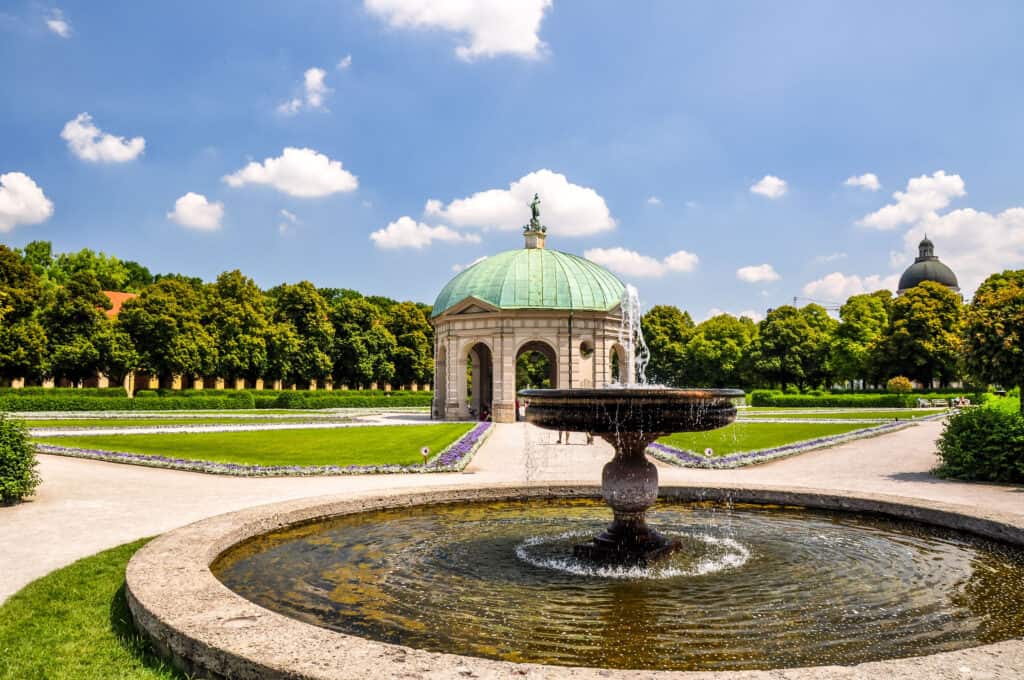
The park also features several miles of walking and cycling paths, making it a popular spot for outdoor recreation. Visitors can also take a dip in the Eisbachwelle, a man-made wave that is popular for surfing, or rent a paddle boat and explore the park’s many lakes and streams.
The Englischer Garten is also home to a Japanese tea house, which offers traditional tea ceremonies and a peaceful retreat from the hustle and bustle of the city. Visitors can learn about Japanese culture and sample traditional tea and sweets while enjoying the tranquil surroundings of the park.
Nymphenburg Palace
Nymphenburg Palace is a magnificent Baroque palace located in the western part of Munich. It was built in the 17th century as a summer residence for the ruling family of Bavaria and is now one of the city’s most important cultural landmarks.
The palace is known for its impressive architecture, which features a grand central building surrounded by four wings and beautiful gardens. The interior of the palace is just as impressive, with ornate rooms that are filled with works of art and antiques.
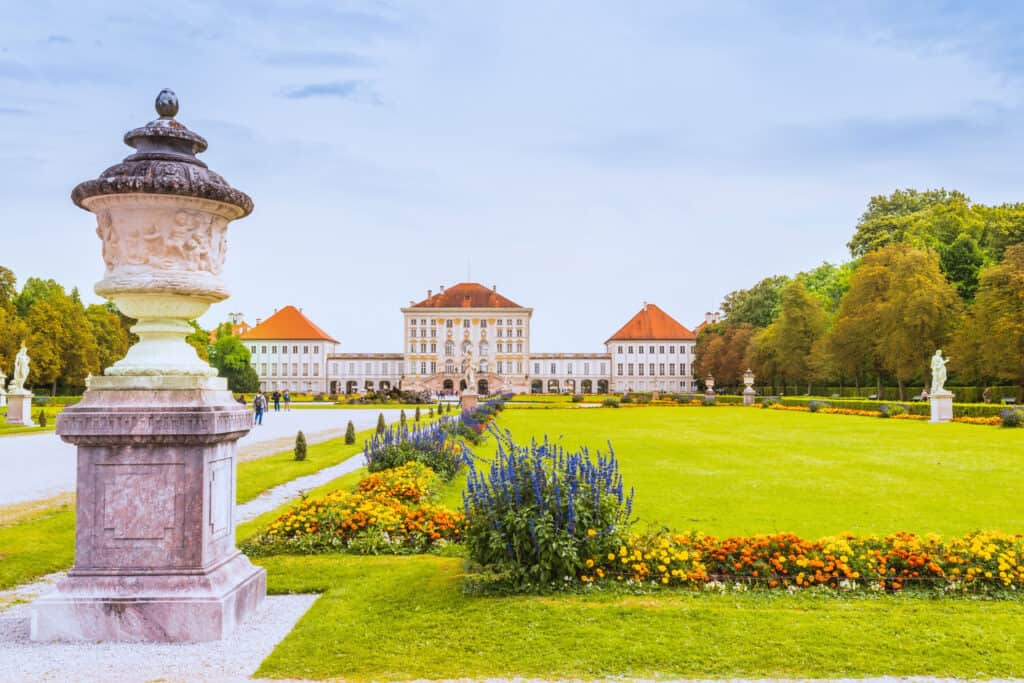
One of the most notable rooms in the palace is the Hall of Beauties, which features a collection of portraits of the most beautiful women of the 18th century. Another must-see room is the Porcelain Room, which is filled with beautiful porcelain figures and plates that were created in the Nymphenburg Porcelain Factory.
The palace is also home to several museums, including the Nymphenburg Palace Museum, which features exhibits on the history of the palace and its role in the cultural and political life of Munich.
Visitors can also explore the palace’s beautiful gardens, which feature a variety of walking paths, fountains, and statues. The gardens are particularly lovely in the summer months, when the flowers are in bloom and visitors can enjoy the warm weather and beautiful scenery.
Viktualienmarkt
Viktualienmarkt is one of the largest and oldest outdoor markets in Munich. It has been a part of the city’s cultural and commercial landscape for over 200 years and is a popular destination for both locals and tourists.
The market is located in the heart of the city and covers an area of over 30,000 square meters. It is made up of 140 stalls that offer a wide variety of goods, including fresh produce, flowers, artisanal foods, and handmade crafts. Visitors can sample local specialties, such as freshly baked pretzels and delicious sausages, and buy souvenirs to take home with them.
In addition to its many stalls, Viktualienmarkt is also home to several traditional Bavarian taverns and beer gardens, where visitors can relax and enjoy a cold beer and a delicious meal.
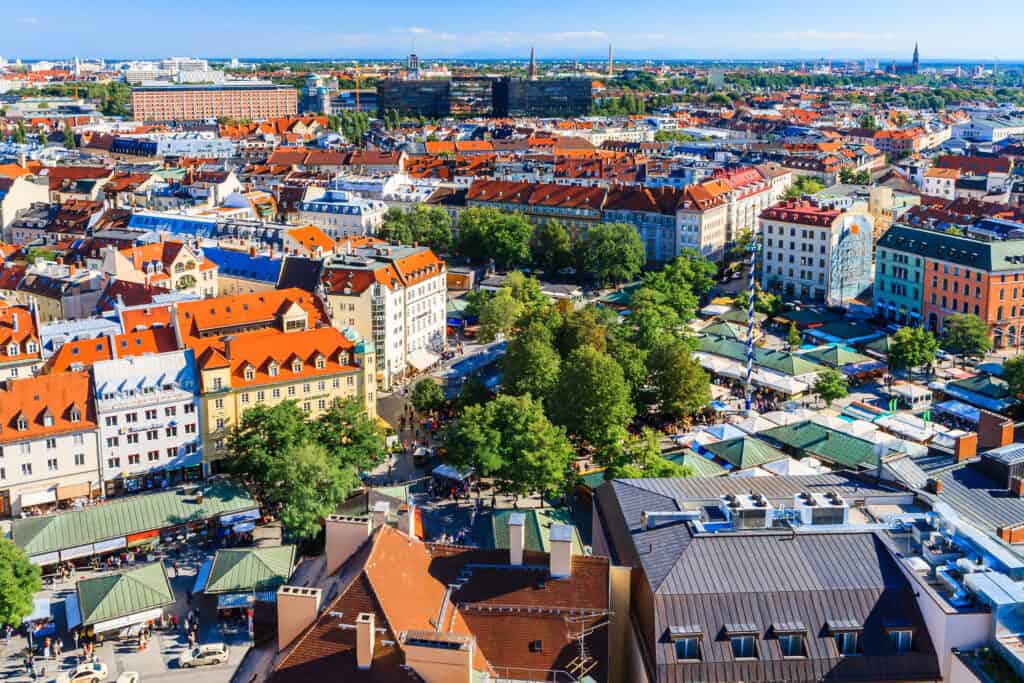
The market is also known for its lively atmosphere, with street performers and musicians providing entertainment for visitors. It’s a great place to people-watch and soak up the local culture, and is a must-visit for anyone looking to experience the traditional side of Munich.
Visitors can also explore the nearby St. Peter’s Church, which is one of the oldest and most important churches in Munich. The church features beautiful stained-glass windows and a historic cemetery, which is the final resting place of many famous Bavarians.
Hofbräuhaus
Hofbräuhaus is one of the oldest beer halls in Munich and is a must-visit for anyone interested in experiencing the traditional side of the city. This historic beer hall was established in 1589 and has been a popular gathering place for locals and tourists ever since.
Hofbräuhaus is famous for its lively atmosphere and its traditional Bavarian décor, which features long wooden tables, benches, and a large stage for live music. The beer hall is known for serving some of the best beer in the city and is a great place to try a traditional Bavarian meal, such as roast pork or sausages.

Visitors can also enjoy live music and entertainment, as well as participate in traditional Bavarian activities, such as singing and beer-drinking contests. Hofbräuhaus is also a popular destination for tourists who are interested in the local culture and want to experience the famous Bavarian hospitality.
In addition to its beer and food, Hofbräuhaus is also famous for its historic role in the city’s cultural and political life. The beer hall was a popular gathering place for artists, writers, and political activists, and played a significant role in the development of Munich’s cultural identity.
Neuschwanstein Castle
Neuschwanstein Castle is one of the most famous castles in the world and is a must-visit for anyone visiting the region surrounding Munich. The castle is located in the beautiful Bavarian Alps, about 2 hours away from Munich, and is a popular destination for tourists who are interested in architecture, history, and fairy tales.
Neuschwanstein Castle was built in the 19th century by King Ludwig II of Bavaria, who was known for his love of the arts and his passion for grand architecture. The castle is considered to be one of the most important examples of romanticism in Europe and is often referred to as the “fairy-tale castle.”
Visitors to Neuschwanstein Castle can explore the castle’s beautiful interior, which is filled with ornate furnishings and works of art. The castle also features a grand staircase, a throne room, and a beautiful chapel, all of which are considered to be some of the most beautiful examples of 19th-century architecture.
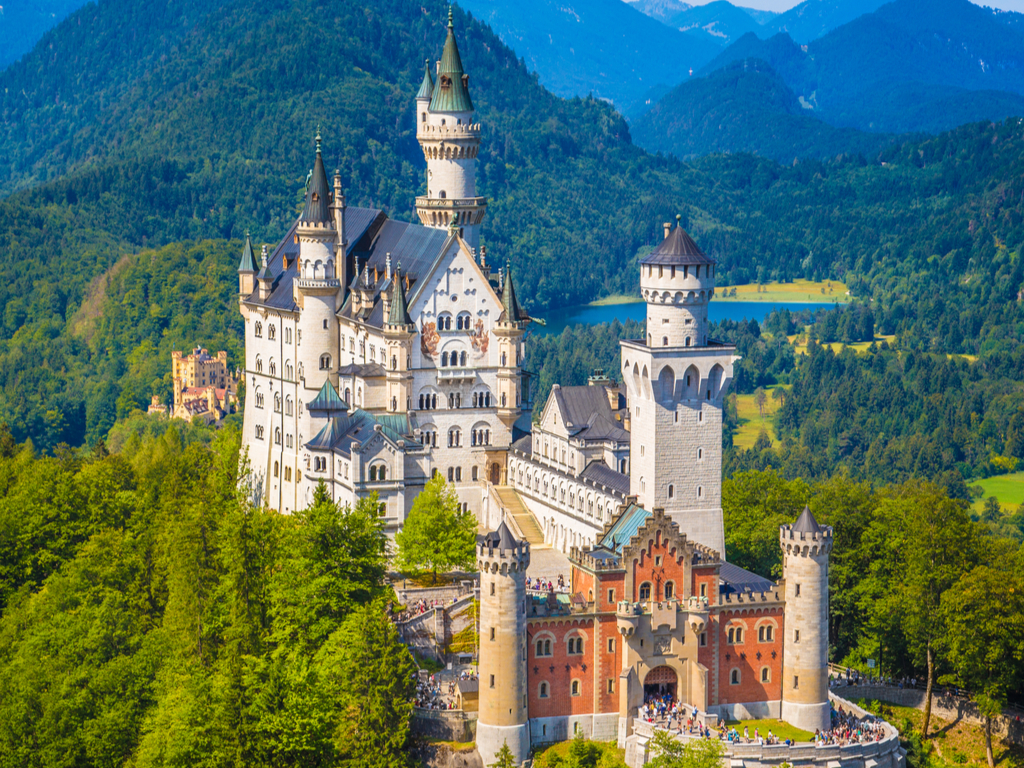
In addition to its beauty, Neuschwanstein Castle is also famous for its location, which is surrounded by stunning scenery. The castle is set on a hilltop, offering panoramic views of the surrounding mountains and forests, making it a popular destination for nature lovers and outdoor enthusiasts.
Visitors can also explore the nearby town of Hohenschwangau, which is the birthplace of King Ludwig II and is also home to several historic buildings and museums. The town is a great place to learn about the life and legacy of King Ludwig and the history of the region.
Frauenkirche
Frauenkirche is a iconic landmark in the heart of Munich and is a must-see for anyone visiting the city. This beautiful cathedral is considered to be one of the most important examples of Gothic architecture in Germany and is a symbol of the city’s rich cultural heritage.
Frauenkirche was built in the 15th century and is renowned for its two onion-domed towers, which are visible from across the city. The interior of the cathedral is equally impressive, featuring stained glass windows, a grand nave, and a beautifully carved high altar.
Visitors to Frauenkirche can explore the cathedral’s interior, which is open to the public year-round. Guided tours are also available, which provide a detailed history of the cathedral and its role in the city’s cultural and religious life.
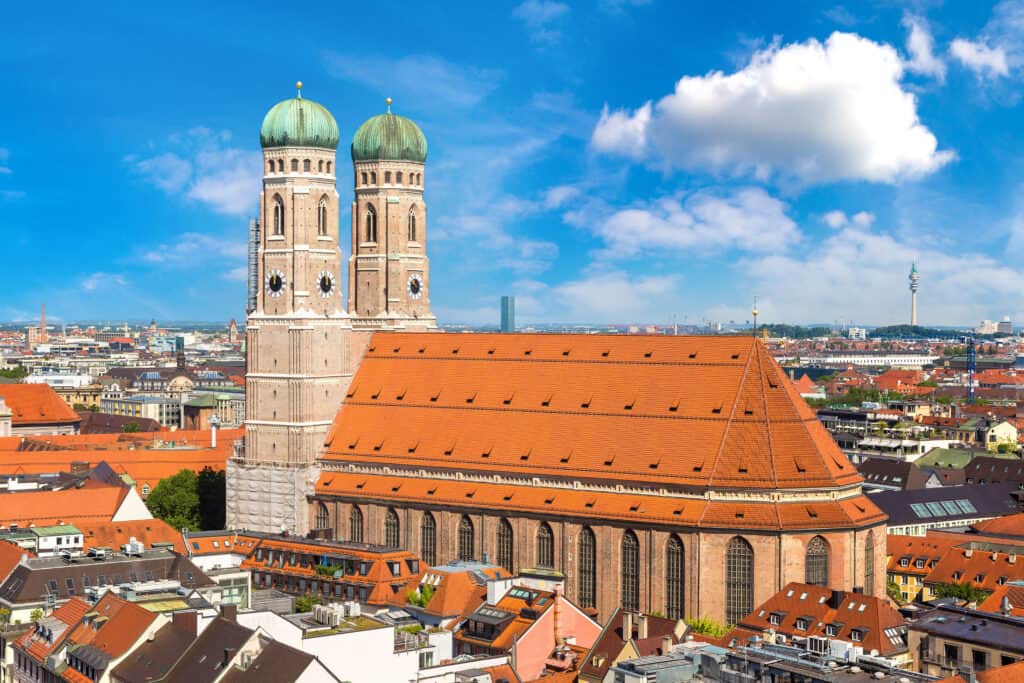
In addition to its religious significance, Frauenkirche also has a rich historical and cultural heritage. The cathedral has been the site of several important events in the city’s history, including the crowning of the city’s rulers and the celebration of religious holidays.
Today, Frauenkirche is a popular destination for tourists, who come to admire its beauty, learn about its history, and take in the stunning views from its towers. Whether you’re interested in history, architecture, or simply want to experience the beauty of one of Munich’s most iconic landmarks, Frauenkirche is a must-visit.
Olympic Park
The Olympic Park in Munich is a must-see for anyone visiting the city, especially for sports fans and those interested in modern architecture. The park was built for the 1972 Summer Olympics and has since become one of the city’s most popular attractions.
The Olympic Park covers a large area and is home to several iconic buildings, including the Olympic Stadium, the Olympic Swimming Hall, and the Olympic Tower. The stadium is particularly famous, with its iconic tent roof and seating capacity of over 80,000. Visitors can take a tour of the stadium and learn about its history, including its role in the 1972 Summer Olympics and its continued use as a major sporting venue.
The Olympic Tower, located in the heart of the park, offers panoramic views of the city and the surrounding mountains. Visitors can take an elevator to the observation deck, which is located at a height of 190 meters, for breathtaking views of the city.

The Olympic Park is also home to several museums, including the Olympic Museum and the BMW Museum, both of which showcase the history and cultural significance of the Olympic Games and the BMW brand.
In addition to its cultural and historical significance, the Olympic Park is also a popular destination for outdoor recreation. The park features several walking and biking trails, as well as several large green spaces, making it a great place for picnics, relaxation, and outdoor activities.
Art and Culture
Munich is a city that is rich in art and culture, with a vibrant cultural scene that offers something for everyone. Whether you’re interested in art, music, theater, or dance, there’s always something going on in this exciting city.
Bavarian State Opera
The Bavarian State Opera, located in the heart of Munich, is one of the city’s most famous cultural attractions and is considered to be one of the world’s leading opera houses. The opera house was founded in 1653 and has since become a hub of musical and cultural activity in the city, attracting visitors from all over the world.
It is renowned for its high-quality productions and its commitment to preserving the art of opera. The opera house regularly hosts performances by some of the world’s greatest opera singers, and its productions are renowned for their attention to detail and stunning sets and costumes.
The opera house itself is a work of art, with its beautiful neoclassical architecture, ornate interiors, and exceptional acoustics. Visitors can take a tour of the building to learn about its history and to admire its beauty, including its magnificent stage and stunning frescoes.

The Bavarian State Opera also offers a variety of programs and events throughout the year, including operas, ballets, concerts, and cultural events. Whether you’re a seasoned opera lover or a newcomer to the genre, you’re sure to be impressed by the high quality and diversity of the performances on offer.
If you’re visiting Munich, the Bavarian State Opera is a must-see destination. With its rich history, stunning architecture, and exceptional productions, it’s a true testament to the city’s commitment to preserving the art of opera and promoting cultural richness. Whether you’re a music lover, a history buff, or simply looking for an unforgettable experience, the Bavarian State Opera is a must-visit.
Alte Pinakothek
The Alte Pinakothek is a world-renowned art museum located in the heart of Munich. Established in 1836, it is one of the oldest art museums in the world and is home to an extensive collection of European masterpieces from the Middle Ages to the 18th century.
The museum’s collection is diverse and encompasses a wide range of styles and movements, from the Gothic and Renaissance periods to the Baroque and Rococo styles. Visitors can admire works by some of the greatest artists of all time, including Albrecht Dürer, Jan van Eyck, Sandro Botticelli, and Rembrandt, among many others.
The Alte Pinakothek is also known for its beautiful architecture and interior design, which is a true work of art in its own right. The museum’s neoclassical building features elegant marble columns, ornate frescoes, and stunning glass roofs, all of which provide the perfect setting for its incredible art collections.

One of the highlights of the Alte Pinakothek is its famous collection of German Renaissance paintings, which is considered to be one of the finest in the world. The museum also boasts a vast collection of Dutch and Flemish masterpieces, as well as a comprehensive collection of Italian and Spanish paintings from the 16th and 17th centuries.
In addition to its permanent collection, the Alte Pinakothek regularly hosts temporary exhibitions, which showcase works by contemporary artists and offer visitors the opportunity to see art from other cultures and time periods.
History and Heritage
From its origins as a medieval settlement to its status as a modern metropolis, Munich has been at the center of some of the most important events in German history, making it a fascinating destination for those interested in learning about the past.
One of the most significant periods in Munich’s history was the Renaissance, when the city experienced a cultural and intellectual revival. During this time, Munich became a center for the arts and sciences, attracting artists, scholars, and intellectuals from all over Europe. Many of the city’s finest buildings, including the Frauenkirche and the Nymphenburg Palace, date back to this period.
Another important period in Munich’s history was the 19th century, when the city underwent rapid industrialization and became one of Germany’s leading economic centers. During this time, Munich was transformed from a small town into a modern city, and many of the city’s most famous landmarks, including the Marienplatz and the Viktualienmarkt, were built.
In more recent times, Munich has played a key role in the history of Germany and Europe. The city was the birthplace of the Bavarian revolution in 1918, which led to the establishment of the first democratic republic in Germany. During World War II, Munich was heavily bombed, but much of the city’s historical heritage was miraculously preserved.
Today, Munich’s rich history and heritage are evident throughout the city, from its magnificent buildings and monuments to its vibrant cultural scene. Whether you’re exploring the city’s museums, walking through its historic neighborhoods, or simply admiring its beautiful architecture, you’ll be constantly reminded of the city’s rich cultural legacy.
Nightlife
From stylish rooftop bars with stunning views of the city, to intimate jazz clubs and chic dance clubs, Munich offers a wealth of options to choose from.

Maximilianstrasse
One of the highlights of the Maximilianstrasse is the fashionable lounge bar, Bar am Gaußplatz. This chic bar offers an extensive cocktail menu, a wide range of wine and champagne, and a stylish atmosphere that is perfect for a night out with friends or a romantic evening with a partner.
For those who enjoy live entertainment, the Maximilianstrasse is home to a number of chic jazz clubs, including the Jazzclub Unterfahrt. This popular jazz club offers a variety of live performances throughout the year, and is the perfect place to enjoy an intimate evening of live music.
Another popular destination for those seeking an upscale nightlife experience on the Maximilianstrasse is the P1 Club. This chic and stylish nightclub is one of the city’s most famous nightlife destinations, and offers a variety of events, including live performances, DJ sets, and parties.
If you’re looking for a more relaxed evening out, the Maximilianstrasse is home to a number of wine bars and lounges, where you can enjoy a drink or a meal in a relaxed and sophisticated environment. Whether you’re looking for a romantic evening or a night out with friends, the Maximilianstrasse has something to offer everyone.
Rooftop Bars
Munich is home to a number of stunning rooftop bars, offering breathtaking views of the city and a chic and sophisticated atmosphere. Whether you’re looking for a place to relax with friends, or a romantic evening with a partner, these rooftop bars are the perfect place to experience the best of Munich’s nightlife.
One of the most popular rooftop bars in Munich is the Sky Lounge at the Hilton Munich Park Hotel. This elegant bar offers panoramic views of the city, and serves a wide range of cocktails, wine, and champagne. With its stylish atmosphere and breathtaking views, the Sky Lounge is the perfect place for a night out with friends or a romantic evening with a partner.
Another popular rooftop bar in Munich is the Bar 59 at the Park Inn by Radisson Munich. This chic bar offers stunning views of the city and a relaxed atmosphere, making it the perfect place to unwind after a busy day of sightseeing. With its extensive drink menu and delicious snacks, the Bar 59 is a popular destination for those seeking a night out on the town.
For those who are looking for a more laid-back atmosphere, the Terrasse am Olympiapark is the perfect destination. This outdoor bar offers breathtaking views of the Olympic Park and the surrounding city, and is the perfect place to enjoy a drink or a meal while taking in the sights and sounds of Munich.
Jazz Clubs and Live Music
From jazz clubs to live music venues, there is a wealth of options for music lovers to choose from. Whether you’re a fan of jazz, rock, pop, or classical music, there is something for everyone in Munich.
One of the city’s most famous jazz clubs is the Jazzclub Unterfahrt. This iconic venue has been hosting live jazz performances since the 1950s and is widely regarded as one of the best jazz clubs in Europe. With its intimate atmosphere, great sound system, and top-notch musicians, the Jazzclub Unterfahrt is the perfect place to experience the best in jazz music.
Another popular destination for live music in Munich is the Muffatwerk. This versatile venue hosts a wide range of events, including concerts, DJ sets, and dance parties. With its spacious dance floor and state-of-the-art sound system, the Muffatwerk is a popular destination for those looking for a night of live music and dancing.
For those who are looking for a more intimate live music experience, the Neues Schauspielhaus is a must-visit. This small theater hosts a variety of live performances, including jazz, classical music, and folk concerts. With its cozy atmosphere and great acoustics, the Neues Schauspielhaus is the perfect place to experience live music in a more intimate setting.
Munich is also home to a number of large-scale music venues, such as the Olympiahalle and the TonHalle. These venues host concerts by some of the biggest names in the music industry, making them a popular destination for music fans of all ages.
In addition to its traditional music venues, Munich is also home to a number of outdoor music festivals, including the Munich Summer Festival and the Tollwood Festival. These festivals offer a diverse range of musical styles and are the perfect place to experience live music in the open air.
Remember for December – Christmas Market
Munich has one of Germany’s most beautiful Christmas Markets, these markets are only opened for four weeks during the month of December.
 FooTToo / Shutterstock.com
FooTToo / Shutterstock.comRead more: Visit the famous Christmas markets in Germany
How to get around
Getting around Munich is easy and convenient, thanks to its well-developed transportation network. Whether you’re traveling by train, bus, taxi, or bike, you’ll find that there are plenty of options to get you from one place to another. Here are some of the best ways to get around in Munich:
Public Transportation
Munich has an extensive public transportation network that includes buses, trams, and trains. The quickest and most convenient way to get around the city is by taking the U-Bahn (underground) or S-Bahn (surface railway). These trains run frequently and cover most of the city, making it easy to reach your destination.
Taxis
Taxis are readily available in Munich and are a good option if you’re in a hurry or traveling with a group. However, they can be more expensive than other modes of transportation, so it’s best to have a rough idea of how much your fare will be before you get in the taxi.
Bikes
Munich is a bike-friendly city and has a large network of bike lanes and bike-friendly roads. Renting a bike is a great way to see the city and is a fun, healthy, and environmentally friendly option.
WalkingIf you’re staying in the city center, walking is a great way to get around and see the sights. With its compact size and pedestrian-friendly streets, it’s easy to walk from one attraction to another.
Car Rental
While driving in Munich can be challenging due to traffic and limited parking, it can be a convenient option if you’re traveling outside the city center or want to explore the surrounding area.
Private Tours
If you want to see as much of Munich as possible in a short amount of time, consider taking a private tour. With a knowledgeable guide, you’ll be able to see the best sights and learn about the city’s history and culture.
No matter what mode of transportation you choose, you’ll find that getting around Munich is easy and convenient.
How to get there
| Destination | Distance (km) | Distance (mi) | By Car (hours) | By Train (hours) | By Bus (hours) |
|---|---|---|---|---|---|
| Cologne | 300 | 186 | 3.5 – 4 | 3 | 4 – 5 |
| Berlin | 550 | 341 | 6 – 7 | 5 | 6 – 7 |
| Frankfurt | 250 | 155 | 2.5 – 3 | 2.5 | 3 – 4 |
| Hanover | 350 | 217 | 4 – 4.5 | 3.5 | 4.5 – 5 |
| Hamburg | 550 | 341 | 6 – 7 | 5 | 6 – 7 |
| Stuttgart | 220 | 137 | 2.5 – 3 | 2 | 2.5 – 3 |
These estimated travel times are based on average driving speeds and public transportation schedules and may vary depending on traffic conditions and other factors. It is always best to check with your chosen mode of transportation for the most up-to-date information.




